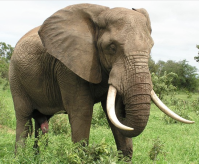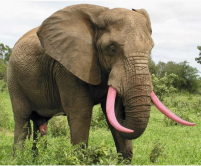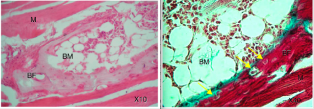I emailed conservation biologist Sam Wasser the question of whether it is practical to protect elephants from poachers by dyeing their tusks.
He replied,
“Thanks for your note. It’s an interesting idea. The big concern is the time it will take to stain the tusks of 400,000 skittish elephants and the time it will take for the stain to find it’s way into the tusk. Most likely, permanent stain will have to be delivered by food and grow into the tusk. You can’t immobilize 400,000 elephants to stain their tusks as it is too risky for the elephants and the people doing the immobilizations. Thus, it would take many years to achieve your goals, if it is even possible. Given the urgency of the situation (30,000-45,000 elephants now being killed annually), we need a plan that stops as much of the killing as possible, as soon as possible. (This is, of course, in addition to programs aimed at decreasing demand.) Our program aims to achieve these objectives by using DNA assignment to identify all major poaching hotspots across Africa for targeted law enforcement.”
Dr. Samuel Wasser
Director of Center for Conservation Biology
Research Professor, Department of Biology
University of Washington, Seattle
I wondered
Instead of 400,000, what if we focused on the 200,000 elephants at the greatest risk in Tanzania and Zimbabwe as well as those in Central and Western Africa? No worries about Botswana’s 125,000+ elephants. They’re safe enough there that other elephants emigrate there. Let’s focus on the places where the weak rule of law makes problematic such traditional anti-poaching methods as 24/7 vigilance over vast areas, more guns and better enforcement. A staining program might only require country access every 2 or 3 years.
What if we didn’t have to immobilize, or knock out, the elephants? The last scholarly article about drug delivery to elephants was in 2004 and that centered on a captive Asian elephant. Maybe the urgency of the poaching crisis might inspire some new research.
What if a staining program didn’t take many years to implement? What if the dye already exists, but the people who are using it are too far removed from elephant conservation to say, “Hey, I wonder if this amazing stain might help against poaching . . .?” Specialists in bone disease or regrowth, say or cosmetic dentists or consumer food company chemists.
We need a plan. We needed a plan when South Africa hunted its elephants to near extinction by 1900. We needed a plan in 1989 at the peak of the last poaching crisis. We will need a plan if ever there is a recovery in the decimated herds of Angola, South Sudan, the Congo Basin or any of the West African countries.
Note on Dr Wasser and his team
They are building and using an elephant DNA database to fight elephant poaching and ivory smuggling now and in the future. The database helps identify a tusk’s or piece of ivory’s country of origin. This gives some sense of whether a tusk might be illegally gotten or not. It also helps law enforcement understand where the poaching is going on as well as something of ivory smuggling routes.
Most anti-poaching efforts are temporary. New rangers are hired. Guns, vehicles drones and GPS equipment are bought. These however are effective only up to the inevitable moment the funding runs out or corruption moves in. Bans and Global Initiatives are great while political will and public attention exists.
By contrast, the value of the Center for Conservation Biology’s elephant DNA database will continue to grow as it becomes more comprehensive. Its funding may ebb and flow, but its usefulness will only grow.
Dr Wasser’s June 2015 article gives an overview of the database and its value to protecting the elephants.
In 2010, his team helped block Tanzania’s request to sell 100 tons of its stockpiled ivory by demonstrating how much ivory was already leaving the country illegally, sharply contradicting the government’s modest estimates.



